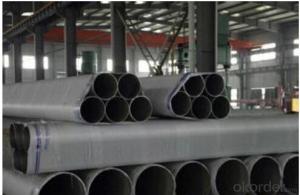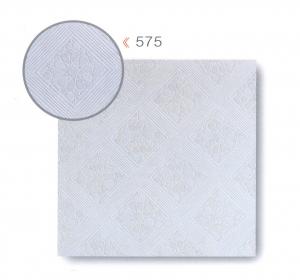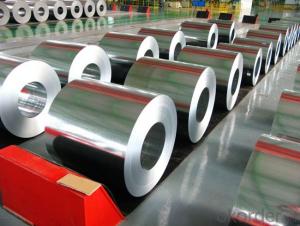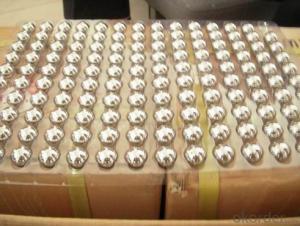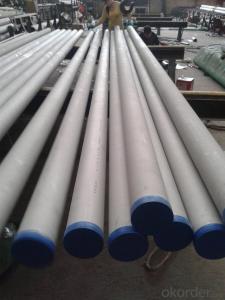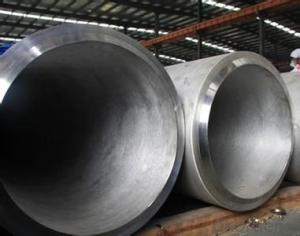Ferritic Stainless Steel
Ferritic Stainless Steel Related Searches
Best Paint For Stainless Steel Blanket Insulation For Steel Buildings Primer For Galvanized Steel Foam Filter For Stainless Steel H S Code For Stainless Steel Surface Grinding Wheels For Stainless Steel Surface Grinding Wheels For Hardened Steel Hole Saw For Stainless Steel Paint For Stainless Steel Stainless Steel For BbqHot Searches
Steel Mesh Panels For Sale Price For Stainless Steel Scrap Scrap Price For Stainless Steel Price For Stainless Steel Stainless Steel Tank For Sale Stainless Steel Sheets For Sale Cheap High Tea Sets For Sale Stainless Steel Tanks For Sale Stainless Steel For Sale High Density Fiberboard For Sale Solar Hot Water Collectors For Sale Scaffolding For Sale In Uae Scaffolding For Sale In Ireland Scaffolding For Sale In Houston Type Of Inverter For Solar Price Of Shipping Containers For Sale Types Of Inverter For Solar Stock Price For Aluminum Used Solar Inverter For Sale Steel Mesh Panels For SaleFerritic Stainless Steel Supplier & Manufacturer from China
Okorder.com is a professional Ferritic Stainless Steel supplier & manufacturer, offers integrated one-stop services including real-time quoting and online cargo tracking. We are funded by CNBM Group, a Fortune 500 enterprise and the largest Ferritic Stainless Steel firm in China.Hot Products
FAQ
- There are several different types of stainless steel pipes available, each with their own unique properties and uses. 1. Austenitic stainless steel pipes: This type of stainless steel is the most common and versatile. It contains high levels of chromium and nickel, making it highly resistant to corrosion and oxidation. Austenitic stainless steel pipes are widely used in various industries, including construction, automotive, and food processing. 2. Ferritic stainless steel pipes: Ferritic stainless steel contains high levels of chromium but low levels of carbon, which gives it excellent resistance to corrosion. These pipes are commonly used in applications where high strength and resistance to stress corrosion cracking are required. 3. Martensitic stainless steel pipes: Martensitic stainless steel is known for its high strength and hardness. These pipes are often used in applications that require resistance to wear and abrasion, such as cutlery, tools, and bearings. 4. Duplex stainless steel pipes: Duplex stainless steel is a combination of austenitic and ferritic stainless steels. This type of steel offers excellent corrosion resistance and high strength. Duplex stainless steel pipes are commonly used in industries that require resistance to chloride stress corrosion cracking, such as offshore oil and gas production. 5. Precipitation-hardening stainless steel pipes: Precipitation-hardening stainless steel pipes are heat-treatable and have high strength and corrosion resistance. They are often used in industries such as aerospace and chemical processing, where both strength and resistance to corrosion are essential. These are just a few examples of the different types of stainless steel pipes available. The choice of the right type of stainless steel pipe depends on the specific application and the required properties, such as corrosion resistance, strength, and temperature resistance.
- Stainless steel pipes, known for their high resistance to corrosion, prove to be a suitable choice for oil refineries. This is particularly important in environments abundant with corrosive substances like crude oil and various chemicals involved in refining procedures. Moreover, stainless steel pipes possess the ability to withstand both high temperatures and pressures, thus making them the perfect means for transporting oil and gas within the refinery. In addition to this, the low maintenance requirements and long lifespan of stainless steel pipes reduce the frequency of replacements, resulting in minimal downtime. In conclusion, stainless steel pipes offer the durability, reliability, and corrosion resistance necessary to meet the demanding conditions of oil refineries.
- Yes, stainless steel pipes are highly suitable for extreme weather conditions. Stainless steel is known for its exceptional resistance to corrosion, making it ideal for withstanding harsh weather conditions such as extreme temperatures, heavy rain, and high humidity. Additionally, stainless steel pipes have excellent strength and durability, allowing them to withstand the impact of strong winds, storms, and other extreme weather events. Moreover, stainless steel is not affected by UV radiation, so it will not degrade or discolor when exposed to intense sunlight. Overall, stainless steel pipes are a reliable and long-lasting option for any application that requires resistance to extreme weather conditions.
- To calculate the flow rate in stainless steel pipes, you can use the principles of fluid dynamics and the properties of the fluid flowing through the pipe. There are several factors that should be taken into consideration: 1. Determine the diameter of the pipe: The diameter of the pipe will affect the flow rate since a larger diameter allows for a greater volume of fluid to pass through. 2. Determine the viscosity of the fluid: Viscosity refers to the resistance of a fluid to flow. Fluids with higher viscosity will flow more slowly, while fluids with lower viscosity will flow more quickly. 3. Calculate the pressure drop: The pressure drop across the pipe is an important factor in determining the flow rate. This can be calculated using pressure measurements at different points along the pipe. 4. Use the Reynolds number: The Reynolds number is a dimensionless quantity that combines the fluid velocity, density, viscosity, and pipe diameter. It helps determine whether the flow is laminar (smooth) or turbulent (chaotic). There are different equations to calculate the Reynolds number depending on the flow regime. 5. Apply the appropriate flow equation: Depending on the flow regime, you can use different equations to calculate the flow rate. For laminar flow, the Hagen-Poiseuille equation can be used. For turbulent flow, the Darcy-Weisbach equation or the Manning equation can be used. By considering these factors and applying the appropriate equations, you can calculate the flow rate in stainless steel pipes. It is important to note that these calculations provide an estimate and may not be exact due to various factors such as pipe roughness, fittings, and other obstructions in the pipe. Therefore, it is recommended to consult with a fluid dynamics expert or use specialized software for accurate calculations.
- Certainly, stainless steel pipes can be utilized in the renewable energy sector with great effectiveness. Stainless steel is an incredibly versatile and durable material that presents numerous advantages for diverse applications within renewable energy systems. One of the primary advantages of employing stainless steel pipes lies in their exceptional resistance to corrosion. This attribute renders them highly suitable for deployment in environments where exposure to moisture, chemicals, and other corrosive elements is prevalent. For instance, solar power plants, geothermal energy systems, and offshore wind farms benefit immensely from the ability of stainless steel pipes to endure these harsh circumstances and maintain their structural integrity over extended periods. Consequently, the frequency of repairs and replacements is minimized. Another merit of stainless steel pipes is their excellent strength-to-weight ratio, facilitating the design of lightweight and efficient structures for renewable energy endeavors. These pipes can be utilized in constructing support frames, structures, and pipelines for wind turbines, solar thermal collectors, and biomass power plants, among other applications. Their strength and durability contribute to the overall reliability and longevity of renewable energy systems. Moreover, stainless steel pipes exhibit resistance to extreme temperatures, making them highly appropriate for deployment in high-temperature scenarios like concentrated solar power systems. These pipes can withstand the intense heat generated by solar receivers without suffering deformation or degradation, ensuring the efficient transfer of heat within the system. In addition to their mechanical properties, stainless steel pipes are also hygienic and environmentally friendly. They are easily cleaned and maintained, thereby reducing the risk of contamination and ensuring the purity of fluids utilized in renewable energy processes. Furthermore, stainless steel is a recyclable material, aligning perfectly with the sustainability principles of the renewable energy industry. In summary, stainless steel pipes offer a dependable, long-lasting, and cost-effective solution for a wide range of applications within the renewable energy sector. Their corrosion resistance, strength, temperature tolerance, and environmental benefits make them an exceptional choice for fluid transportation, structural support, and the ability to withstand the demanding conditions encountered in renewable energy systems.
- What's the difference between stainless steel seamless tube and stainless steel welded pipe?
- Stainless steel seamless pipe featuresFirst, the product of the wall is thicker, it is more economical and practical, the wall thickness of the thinner, processing costs will be substantially increased it; secondly, the product process to determine its performance limitations, generally low precision seamless steel pipe: uneven thickness, tube inner surface brightness low and high cost of fixed length, and the inner surface pitting and black spots difficult to remove; the detection and plastic third, must be processed offline. Therefore, it has its advantages in high pressure, high strength, mechanical structure and timber.
- To prevent contamination in stainless steel pipes, proper cleaning and maintenance practices should be followed. This includes regular inspection and removal of any buildup or deposits, ensuring that the pipes are properly sealed to prevent ingress of contaminants, and avoiding contact with substances that can cause corrosion or contamination. Additionally, implementing a proper filtration system and adhering to recommended hygiene protocols can further prevent contamination in stainless steel pipes.
- Indeed, chemical storage tanks find stainless steel pipes to be a fitting option. The reason lies in stainless steel's exceptional resistance to corrosion, rendering it an optimal selection for the containment and conveyance of chemicals. Its robustness prevails against the influence of diverse chemical substances, acids, and alkalis, thereby preventing any degradation or pollution of the stored materials. Moreover, stainless steel pipes boast remarkable tensile strength, allowing them to endure high pressure situations. This quality renders them a trustworthy alternative for chemical storage tanks, catering to the demands of durability and safety.






















